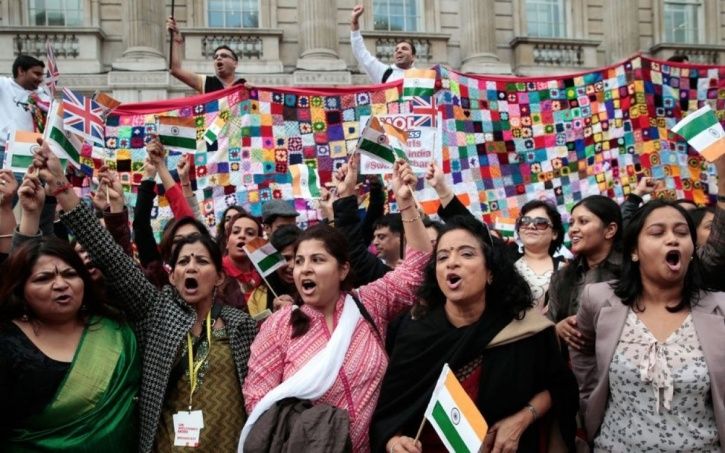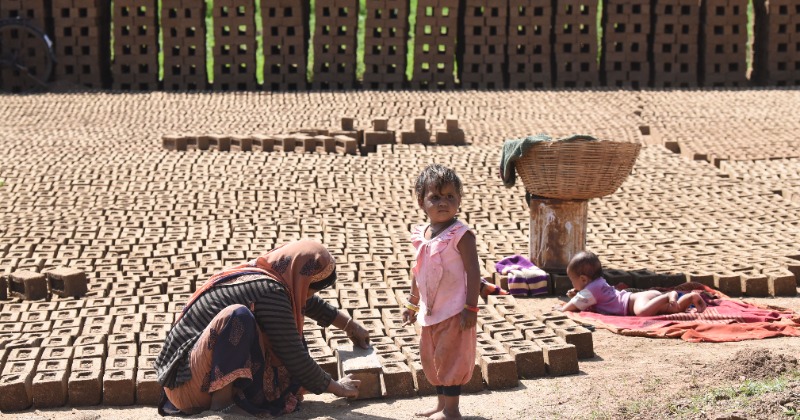With a 17.5 million strong overseas Indian community India is the leading country of origin of international migrants in 2019, according to new estimates released by the United Nations, which said the number of migrants globally reached an estimated 272 million.
The International Migrant Stock 2019, a dataset released by the Population Division of the UN Department of Economic and Social Affairs or DESA today, provides the latest estimates of the number of international migrants by age, sex and origin for all countries and areas of the world.

The Quint
The estimates are based on official national statistics on the foreign-born or the foreign population obtained from population censuses, population registers or nationally representative surveys.
The report said that the top 10 countries of origin account for one-third of all international migrants. In 2019, with 17.5 million persons living abroad, India was the leading country of origin of international migrants.
Migrants from Mexico constituted the second largest diaspora – 11.8 million, followed by China – 10.7 million, Russia – 10.5 million, Syria – 8.2 million, Bangladesh – 7.8 million, Pakistan – 6.3 million, Ukraine – 5.9 million, the Philippines – 5.4 million and Afghanistan – 5.1 million.
India hosted 5.1 million international migrants in 2019, less than the 5.2 million in 2015. International migrants as a share of total population in India was steady at 0.4 per cent from 2010 to 2019.
The country hosted 207,000 refugees, the report said adding that refugees as a share of international migrants in the country was four per cent. Among the international migrants in the country, the female population was 48.8 per cent and the median age of international migrants was 47.1 years. In India, the highest number of international migrants came from Bangladesh, Pakistan and Nepal.
In 2019, regionally, Europe hosted the largest number of international migrants (82 million), followed by Northern America (59 million) and Northern Africa and Western Asia (49 million).
At the country level, about half of all international migrants reside in just 10 countries, with the United States of America hosting the largest number of international migrants (51 million), equal to about 19 per cent of the world’s total.
Germany and Saudi Arabia host the second and third largest numbers of migrants (13 million each), followed by Russia (12 million), the United Kingdom (10 million), the United Arab Emirates (9 million), France, Canada and Australia (around 8 million each) and Italy (6 million).
The share of international migrants in total population varies considerably across geographic regions with the highest proportions recorded in Oceania (including Australia and New Zealand) (21.2 per cent) and Northern America (16.0 per cent) and the lowest in Latin America and the Caribbean (1.8 per cent), Central and Southern Asia (1.0 per cent) and Eastern and South-Eastern Asia (0.8 per cent).
A majority of international migrants in sub-Saharan Africa (89 per cent), Eastern and South-Eastern Asia (83 per cent), Latin America and the Caribbean (73 per cent), and Central and Southern Asia (63 per cent) originated from the region in which they reside.
By contrast, most of the international migrants that lived in Northern America (98 per cent), Oceania (88 per cent) and Northern Africa and Western Asia (59 per cent) were born outside their region of residence.
UN Under-Secretary-General for DESA Liu Zhenmin said that “These data are critical for understanding the important role of migrants and migration in the development of both countries of origin and destination.
With PTI Inputs




